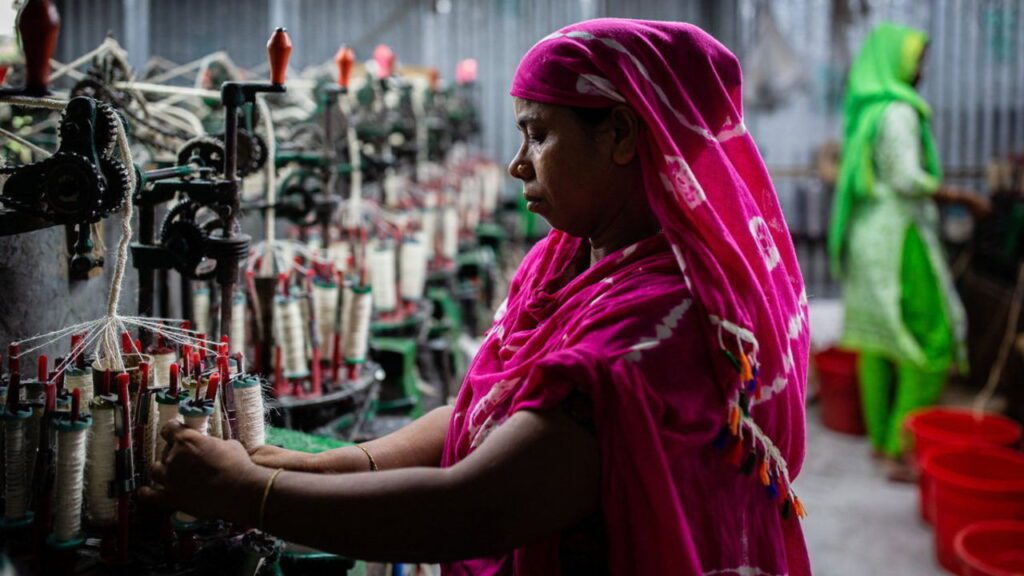Your browser does not support the
Asia’s rise has been stitched together by the textile industry. Across the continent, the production of t-shirts and trousers for the global market has drawn millions from fields to factories. No country exemplifies the power of this process more than Bangladesh. Since building its first export-orientated apparel factory in 1978, a joint venture with a South Korean firm, Bangladesh has turned its economy into a clothes-exporting powerhouse. The sector employs some 4m people, mostly women, and contributes 10% of the country’s GDP. Last year Bangladesh shipped $54bn-worth of garments, second only to China.
In recent months, though, the industry has been fraying at the seams. A months-long crackdown on student-led protests, which included a brutally imposed curfew, curtailed economic activity. Even after the demonstrations forced the resignation of Sheikh Hasina, the unpopular prime minister, unrest has not subsided. Empowered by the protests, several groups, including textile workers, have taken to the streets with fresh demands for the new government led by Muhammad Yunus, the interim leader. The country has also been beset by power failures. Gas shortages this year have forced factories to operate at lower capacity. Overall apparel exports will probably fall by 10-20% this year.
Other countries are hoping to take advantage of this. Despite being the world’s second-biggest producer of cotton—which it exports to Bangladesh—India lags behind its neighbour in garment production, exporting a quarter as much by value in 2023. Recently a group of exporters based in Tiruppur, a textile hub in southern India, said it had earned fresh orders worth $54m because of the unrest in Bangladesh. Another group based outside Delhi said it had received 15% more orders in August from Zara, a Spanish fashion firm.
But seriously denting Bangladesh’s dominance will be difficult. “The current unrest is short-term. Factories are already operating again and the situation is improving,” says Mehdi Mahbub, an industry analyst based in Dhaka. Moreover, Bangladesh still enjoys big advantages over its competitors. Labour costs remain lower than elsewhere. Unlike India, the country also enjoys preferential access to European markets. Above all, its history of textile production means that it is well-equipped to handle large orders. The head of sourcing at Gap says the American fashion brand remains “cautiously optimistic” about Bangladesh’s future.
And India does not have the capacity to compete with Bangladesh at this stage, according to one industry insider. Too much policy attention is directed towards boosting capital-intensive sectors, such as electronics, instead of labour-intensive textiles, he says. Between 2016 and 2023 the value of Indian apparel exports fell by 15%, whereas Bangladesh’s increased by 63%. A recent World Bank report points to India’s protectionist policies as the culprit. Average import tariffs on textiles and apparel, including on intermediate inputs used by local manufacturers, have increased by 13 percentage points since 2017, raising prices for producers.
For India, the bigger opportunity for growth might come from the decline of low-value garment production in China. But here too India will have to contend with competition, including from Bangladesh. According to the bank’s research, the two biggest beneficiaries from China’s shrinking share of low-skill manufacturing exports like garments are Bangladesh and Vietnam. Meanwhile, the quality of jobs matters too; to improve that, the textile industries need to move up the value chain. Both Bangladesh and India are aiming to become developed countries over the next two decades. That requires weaving a more diverse and complex economic fabric. ■
Stay on top of our India coverage by signing up to Essential India, our free weekly newsletter.

